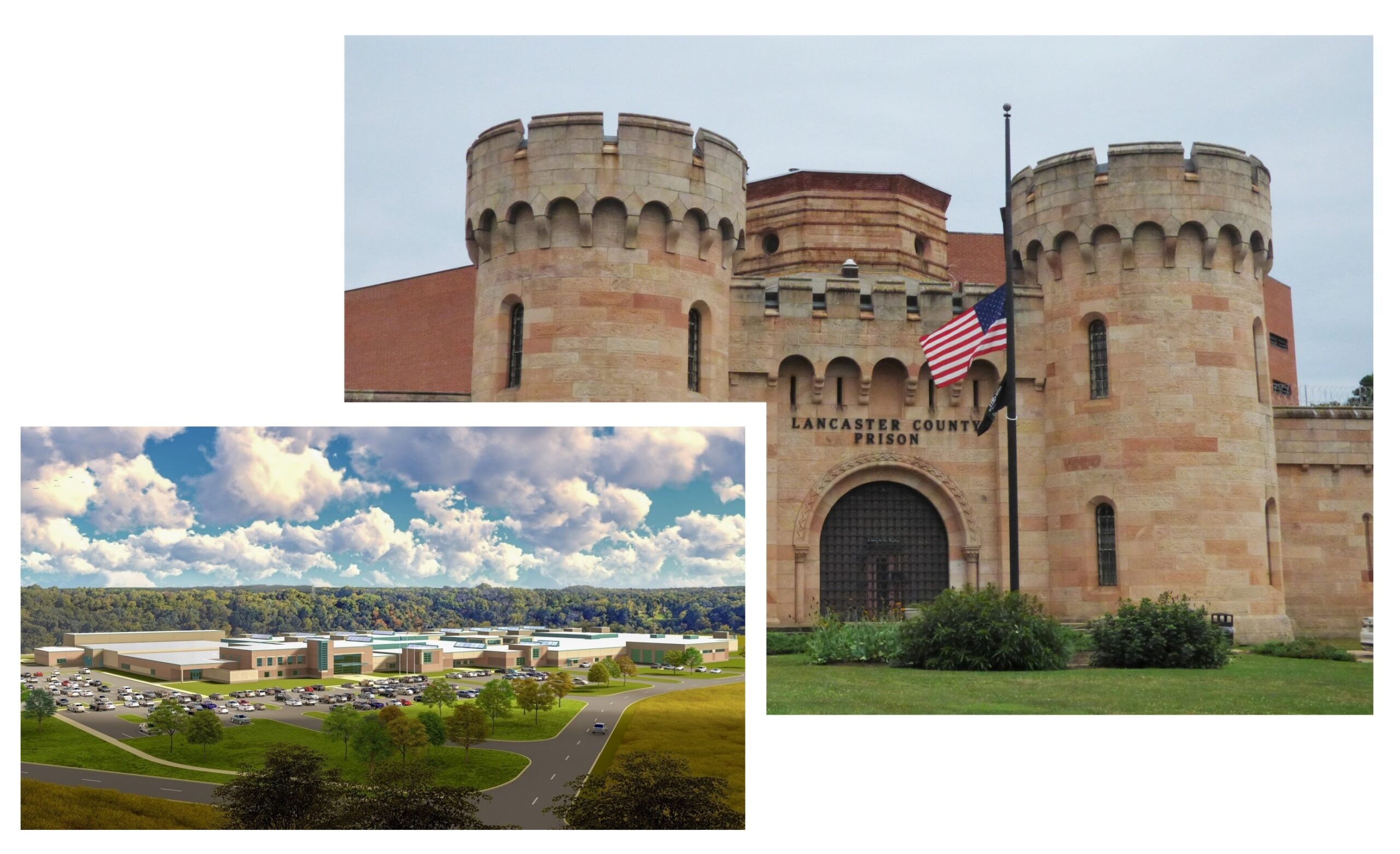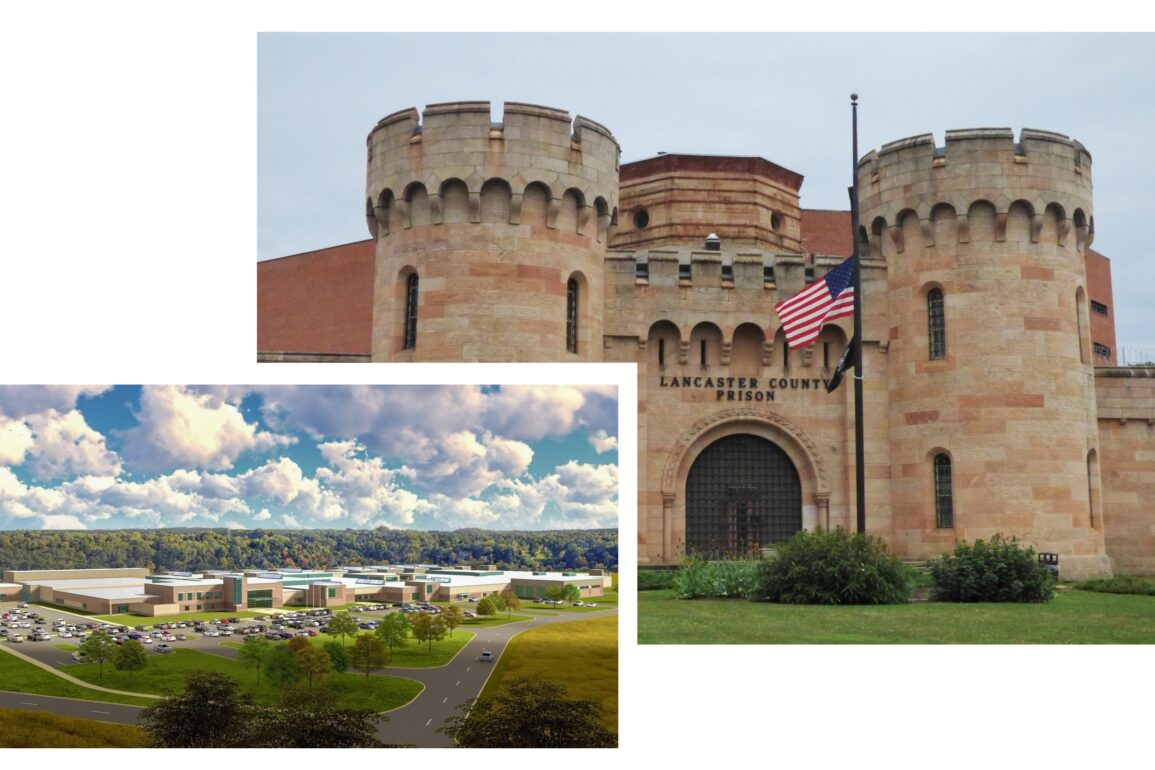
County commissioners Josh Parsons and Ray D’Agostino say that before signing off on a proposed schematic design for the county’s new correctional facility, they need more time to study the submitted draft, consider public feedback and weigh alternatives.
“I want to see different options,” Parsons said Thursday during a lengthy discussion of the project at the county’s monthly Prison Board meeting. The three commissioners are members of the board along with representatives of the county courts, sheriff’s department, district attorney’s office and controller.
It would be a mistake to consider just one layout when building a house, and the same is true of a large project like the correctional facility, he said.
D’Agostino, too, said he wants to see alternatives. He called for the project team to take its data and the existing schematic and “test it even further.”
“I’m not sure the size is the size we should end up with,” he said — adding that he was referring to all of the facility’s components, not just the number of beds.
Thursday’s deliberation represented the commissioners’ first public comments on the proposed schematic design since early August, when it was presented by TranSystems, the architectural and engineering firm leading the design team, and CGL, the consulting firm serving as owner’s representative for the county.
Members of the public had an opportunity to share their opinions at a listening session on Aug. 21. A summary of their comments is at the end of this document on the project website.
The draft calls for a roughly 433,000 square foot facility with 994 beds and includes a preliminary cost estimate of $890 to $940 per square foot. That suggests a total cost of $385 million to $407 million, though the project team and commissioners have cautioned against placing too much weight on what is an extremely early estimate. Much is liable to change, and the true cost won’t be known until construction bids are received and approved.
Commissioner Alice Yoder said she’s pleased with the schematic design and cautioned against taking too much time before moving forward.
“It’s time for a new prison,” she said, and the longer the county waits, the more costs are likely to keep rising. It’s not a “Taj Mahal,” she said: The design looks conservative, and the space allocations appear to be about what is needed to meet the county’s objectives for housing and programs.
She suggested the commissioners give themselves another month to review and approve the project. Parsons and D’Agostino agreed the process needs to move forward but declined to set a firm deadline.
In the end, the commissioners asked the project team to come forward with a range of recommendations based on the input it has received from them and the public at large; along with assessments of what would and wouldn’t be feasible. Those options would then be reviewed at upcoming county commissioner meetings or at October’s Prison Board meeting.
Yoder said she’s interested in weighing the costs and benefits of some proposed environmental sustainability and efficiency features, like a green roof or a geothermal energy system. That comes later in the process, D’Agostino said.
Several audience members offered feedback Thursday. Neil Ward of the Have a Heart advocacy group asked if the schematic design provides enough flexibility for eventual renovation or expansion to meet future needs. Kent Kroehler, also of Have a Heart, questioned whether the plan for enclosed recreation areas — albeit with natural light and fresh air — meets state code requirements for “physical exercise in the open.” (It does, Deputy Warden Miguel Castro said.)
It’s ultimately the role of the commissioners, as trustees of the public purse, to approve the schematic design and authorize the project team to proceed. That said, the Prison Board has an important advisory role, and the commissioners want themselves and the board in alignment, Parsons said.
No crystal ball
The size of the prison has been a topic of intense debate since the start of planning. CGL’s needs assessment suggested a capacity of more than 1,200 beds, based on a projection out to 2050. When the commissioners gave the go-ahead to move into schematic design, they dialed that back to 1,000 beds, with an option to expand later, if needed.
District Attorney Heather Adams said the 1,000-bed benchmark worries her. The prison’s headcount is currently a little over 800: If the county experiences a crime wave, or another pandemic like Covid, correctional facility space could quickly become a concern.
Community advocates have argued the complex could be much smaller if bail reform and other policy changes were implemented, reducing the number of people incarcerated. President Judge David Ashworth, who represents the court system on the Prison Board, has pushed back firmly against that idea, and did so again Thursday.
Judges set bail based on statute and the state court system’s guidance, he said, and any bail decision can be challenged by filing a petition. As for reducing incarceration, the county’s criminal justice system has reduced done so through diversion programs and by moving cases through the courts more quickly. It’s currently exploring addional ways to speed up lower-level cases.
All of those initiatives have impacts on incarceration numbers, but to base the facility’s size on the hoped-for effects of policy changes “goes beyond speculation,” Ashworth said. Ultimately, he said, “it’s a ballpark guess. … Everyone thinks there’s a crystal ball out there, and there isn’t.”
The current timeline calls for the correctional facility to open in late 2027. It’s too early to say if the current schematic design review might lead to that date being pushed back, Parsons said.
Meeting records
Thursday’s meeting took place at the County Prison, as does one Prison Board meeting each quarter. The county does not videotape those meetings, unlike the board’s other meetings at the County Government Center, which are livestreamed and archived.
The meetings at the prison should be filmed and uploaded, too, said Ward and Gail Groves Scott, an opioid researcher and policy advocate. Scott has used her phone or tablet to record recent meetings, and she said the county should be able to do something similar and upload the results to its Vimeo platform.
Scott also questioned the quality of the board’s minutes, saying they often fail to capture the specifics of public comments.
Commissioner Yoder said the county’s IT team had studied the issue of video recording at the prison and were concerned about image and sound quality. She said she had suggested bringing in a third-party provider to help out and is waiting to hear back.
Scott also reiterated her objections to handcuffing inmates during administration of oral medication in the prison’s Medication Assisted Treatment program for substance abuse disorder, contending it’s a civil rights violation and recommending the prison bring in a third-party consultant to evaluate the issue.
This post was originally published on this site be sure to check out more of their content.









